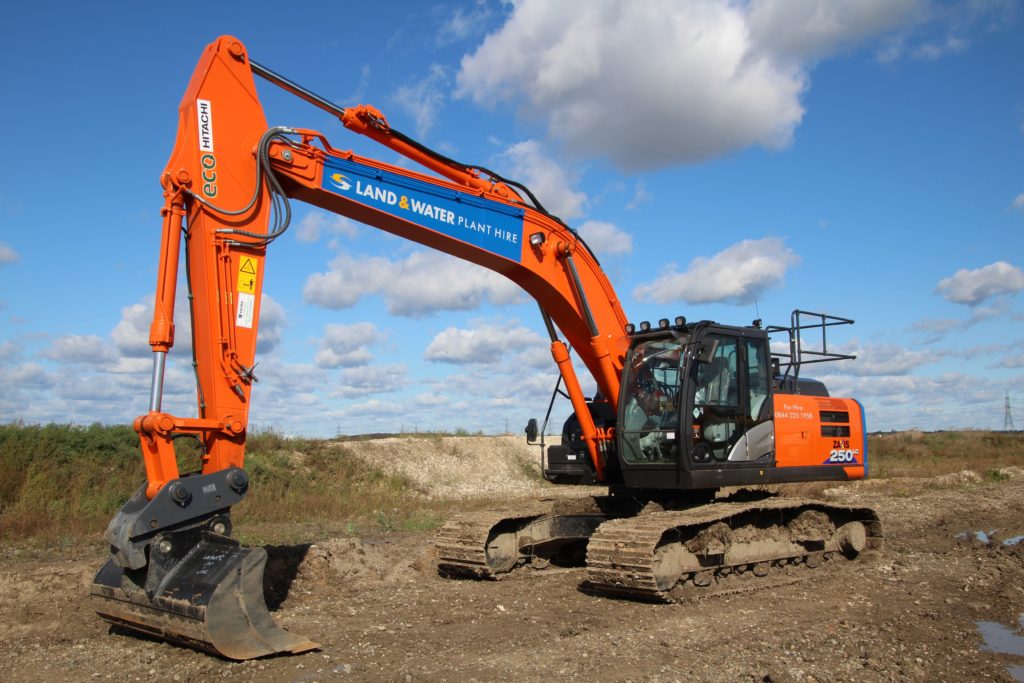Sector - Energy, Fuel & Utilities
Sustainability Helps Civil Engineering Become Carbon Net Zero

James Maclean is CEO at leading wet civil engineering firm Land & Water. In this feature, he writes about how sustainable practices need to be adopted by the civil engineering industry in order to become net zero as well as drawing on the plans Land & Water is making to drive its low carbon thinking.
With a 13% decrease in UK greenhouse gas emissions during 2020, compared to the previous year, the Coronavirus pandemic has certainly shifted our nations focus towards a greener future.
The UK government recently announced its plans to cut carbon emissions by 68% by the end of 2030, however with the reduction in emissions in 2020 being a result of behavioral changes rather than structural enhancements, we still have a long way to go when it comes to implementing sustainable practices.
As one of the key producers of CO2, the construction and civil engineering industries need to be at the forefront of creating environmental change.
At Land & Water, we pride ourselves on introducing some of the most innovative sustainable solutions to our projects whilst following a carbon reduction agenda to add value to the areas in which we work.
We consider this environmental responsibility at each stage of every project whether that be in design, thinking, planning or delivery in order to produce smart changes.
A recent project at Calstock, in Cornwall, on behalf of the Environment Agency is a great example of how Land & Water used strategic, sustainable thinking to drive emissions down.
During the project which reduced the risk of flooding in the local area, through the construction of new flood defence embankments on a set-back alignment, Land & Water saved 75% of construction carbon and 72% whole life carbon. The team also reduced its carbon footprint by 7,350 tonnes by redesigning the geotechnical embankments to prevent the need for using cement to stabilise soils and cement tanker deliveries through the villages.
What’s more, we also increased biodiversity by creating reedbeds to offset some of the habitat losses caused by global warming and protect future eco-systems.
By considering alternative engineering practices, these low energy consumption operations can bring about positive behavioural change within the construction and civil engineering industries.
We are currently developing a simple four step process to help support this carbon reduction strategy. Step One looks at how we deliver our projects – do we actually need to deliver them or can we improve and maintain our waterway and estuarial infrastructure’s differently. Step Two looks at delivery, perhaps maintenance works can use digital mapping and AI to enable “little an often” low energy consumption operations rather than heavy footprint major campaigns. This highly influenced our Calstock project and reduced the use of heavy equipment with alternative materials.
Step Three looks at building in nature as we leave a project behind, creating a habitat within the infrastructure to encourage Net Biodiversity Gain and carbon sequestration at the point we have infringed, and Step Four identifies the most responsible form of offsetting for any residual carbon impact, as close to the project as possible, keeping our carbon impact cycle local. (Buying rainforests abroad, in my opinion, is a “cop out” to a carbon infringement at home, and shows a lack of genuine CSR).
One method myself, and Land & Water, are becoming passionate advocates of is the use of HVO fuel as an alternative to diesel. Not only does it support the UK government’s net zero plans but Crown Oil’s HVO fuel is a 90+% net carbon neutral, fully biodegradable biofuel which uses hydrogen to promote a cleaner-burn, straight carbon chain, without troublesome Esther’s which can cause degradation in time and ultimately block fuel filters.
We have trialled this fuel at Land & Water’s Habitat Creation Scheme at Rainham Marshes and have been incredibly impressed by its performance.
It is therefore important to me that we create as much awareness of this biofuel amongst civil engineering and construction industries as a solution to cutting carbon emissions.
I understand cost can sometimes be a major factor, especially at a Director level, when considering alternative practices, however one of the most impressive advantages for Land & Water was that plant does not need to be modified.
This can significantly help to cut future costs and enable engineers to better the embedded carbon in its existing machinery.
We chose Rainham Marshes as the site for fuel testing due to its existing commitment towards sustainable thinking through its removal, re-use and recycling of dredged materials to enhance the local ecology and achieve a disposal policy of less than 10%.
Land & Water has been working with the Port of London Authority (PLA), RSPB and Natural England to use redundant, non-hazardous waste to create landforms along the East London Corridor. This collaboration will see us operating the 152 hectares of silt lagoons until 2042, resulting in over six million tonnes of wet and dry spoil material being repurposed and 1,000,000m2 of valuable habitat being created.
It’s about being smart and forward thinking.
By prioritising re-engineered spoil, we can minimise landfill waste, reducing carbon emissions generated by waste, and increase biodiversity through enhancing environments and protecting eco-systems.
Many of our other projects, including the recent lake regeneration works at Colchester Hospital and Thames Tideway Tunnel project, have already contributed towards the Habitat Creation Scheme.
We very much look forward to harnessing Rainham as a sustainable solution for change for many years to come and encourage other organisations to explore similar projects which could help safeguard our planet.
Whilst reengineering heavy plant and incorporating alternative fuels is incredibly impactful, educating team members is of similar significance when it comes to driving down carbon and being more environmentally conscious.
It’s about giving the correct operator training and spreading a company’s sustainable ethos from the top down.
An acronym I like to follow is it’s SSSSO simple! That’s ‘it’s so simple… simply switch it off’. By turning off machinery and reducing idle time, which is currently between 25% and 35% on UK construction equipment, firms can start creating sustainable behavioural change.
If you would like to read more stories like this, then please click here
Related Articles
More Energy, Fuel & Utilities Features
- Can we improve the design of an age-old method of heating?
21 Jul 25
There has been an especially significant rise in the popularity of underfloor heating in the last ten years.
- Why early MEP design collaboration holds the key to smarter buildings
24 Jun 25
Working closely is essential to ensure that all aspects of a building’s design contribute to its overall energy performance.
- Insight: Digitalisation and the future of low-carbon housing
23 May 25
Digitalisation is reshaping homes, playing a pivotal role in reducing carbon emissions and enhancing energy efficiency.






